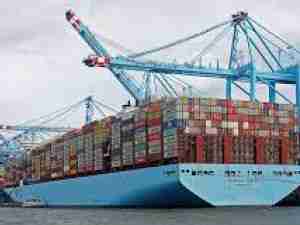Spot container freight rates have increased in recent months, driven by shipping companies' supply discipline, despite a decline in demand at the start of the coronavirus pandemic, Fitch Ratings says. Global shipping companies' financial performance has been improving as a result. We expect healthy freight rates to continue in the short term, although potential pressures from trade protectionism and resulting localisation of supply chains, weak economic recovery and slipping supply discipline may affect rates in the longer term.
Consolidation in the global container shipping industry in recent years is the key factor behind improved supply discipline in the sector. The three largest alliances now account for about 80% of the global market. The market participants have maintained low order-book levels of about 10% of the existing global fleet during the current crisis, compared with about 60% in 2007. The largest companies reduced available shipping capacity by more than 13% during 2Q20 to meet a 11% decline in global demand, according to Hapag Lloyd.
As a result, freight rates have been growing since June 2020, accelerating in August as demand improved and reaching record levels in October despite an initial decline in spot rates at the start of the pandemic. A sharp growth in transpacific rates, which almost tripled yoy, was the largest contributor to the composite global rates increase. Transpacific rates have benefited from increased volumes since June 2020, driven by re-stocking, increased demand for personal protective equipment, and the growth in inventories ahead of the holiday season to cover potential disruptions.
Three of the largest container shipping companies - Maersk, CMA CGM and Hapag Lloyd - reported strong 1H20 results. Their EBITDA grew thanks to higher freight rates, despite lower revenues as transported volumes reduced. The industry's profitability could be one of the highest in 2020 if container liners continue to maintain capacity discipline, given that order books are fairly small. We expect good levels of free cash flow generation this year, which shipping companies are likely to use to reduce debt, which will improve their credit metrics.
The container shipping industry has historically been among the most volatile sectors. Despite some recent structural improvements and less aggressive competition, there are still significant downside risks. A potential decline in shipping demand, particularly on transpacific routes due to US-China trade tensions and supply-chain localisation, growing ecommerce that often uses air transportation, weak global economic conditions, resistance to increased contracted freight rates and slipping shipping companies' supply discipline may put the industry under pressure.










